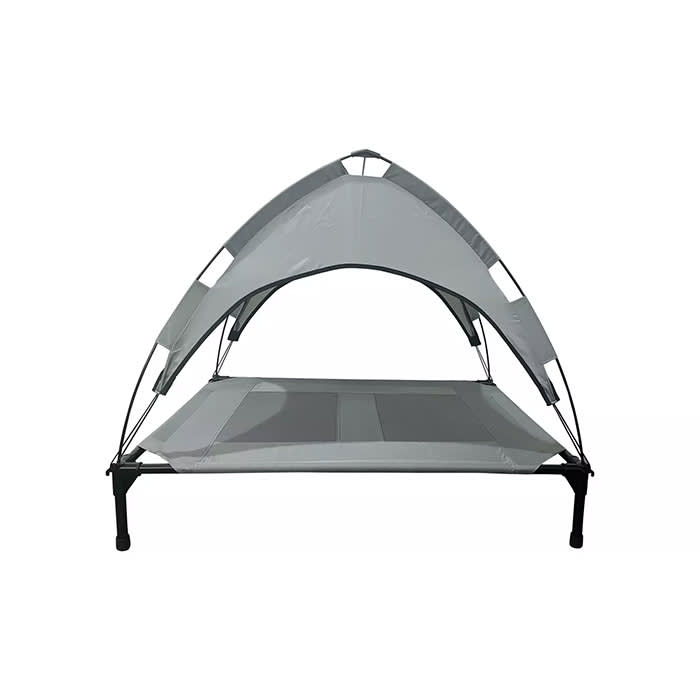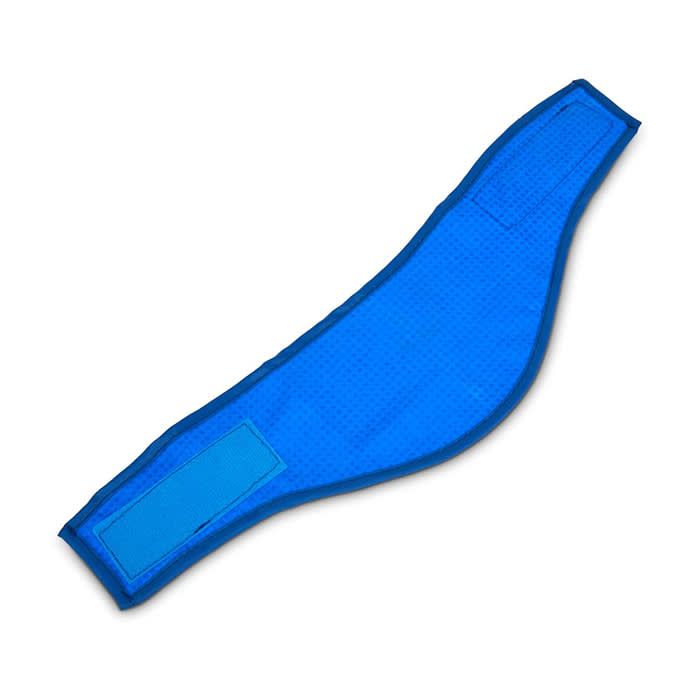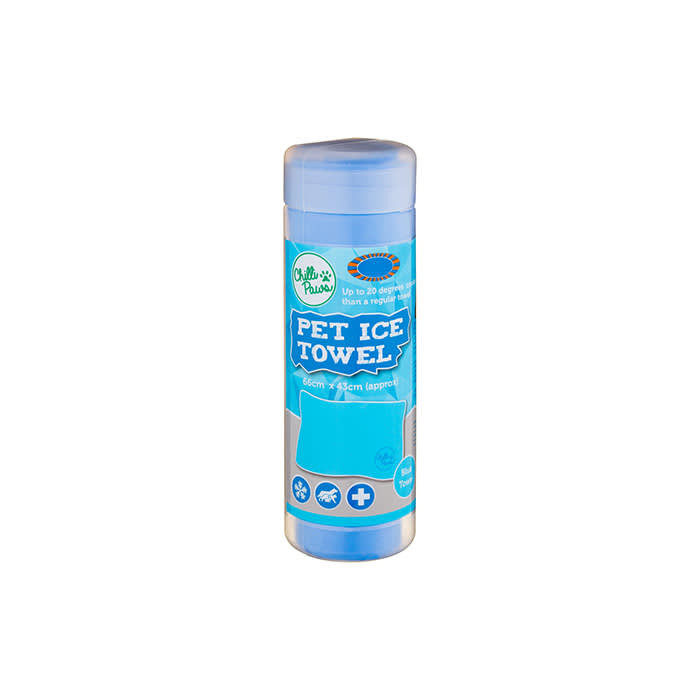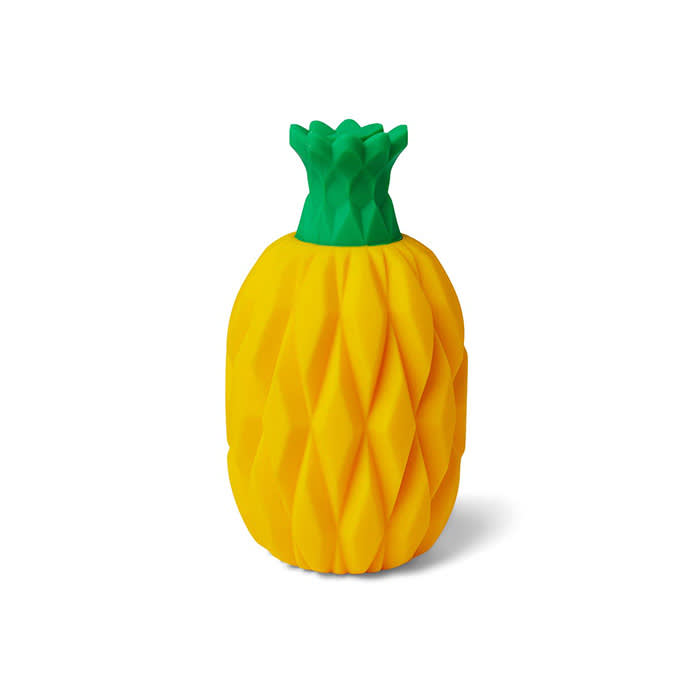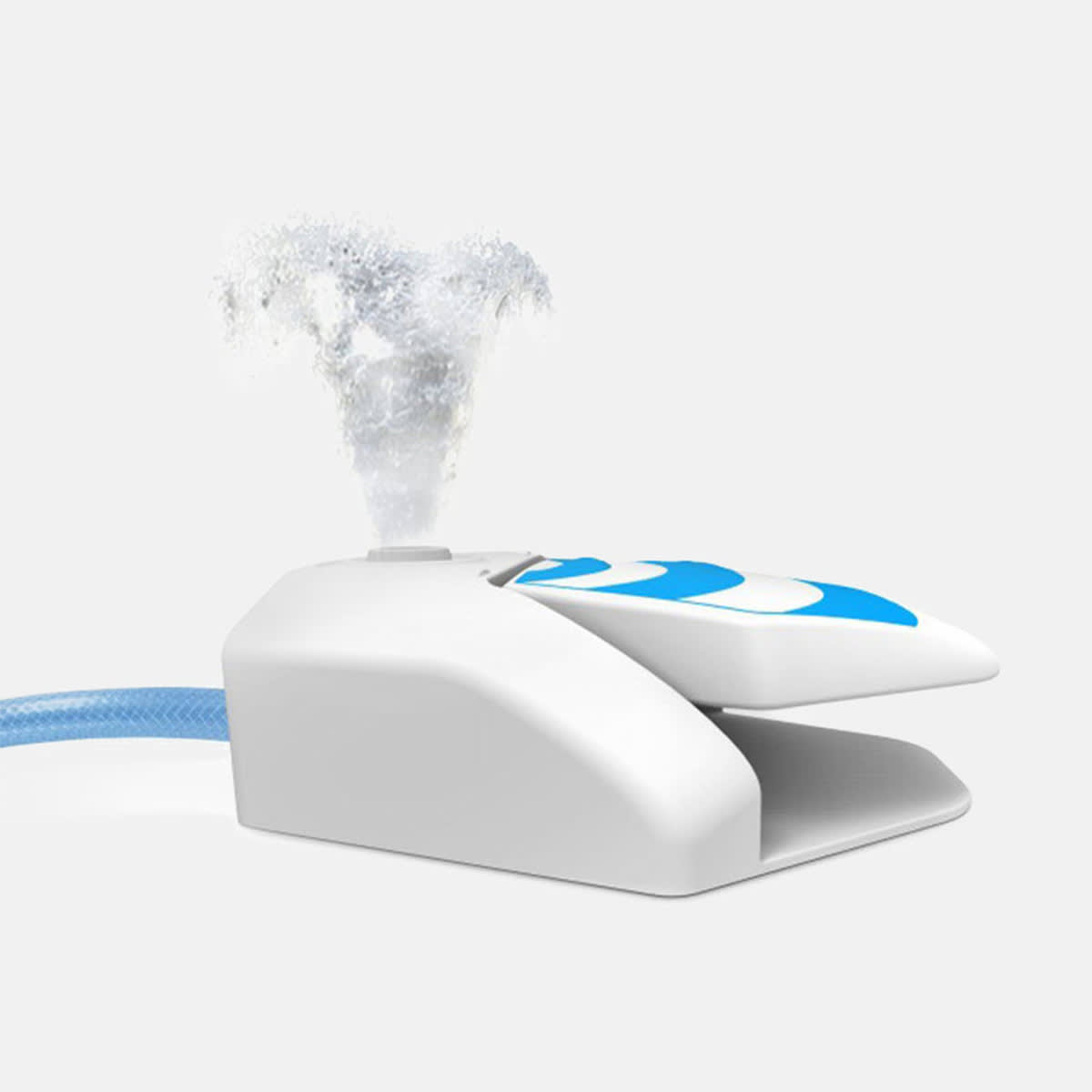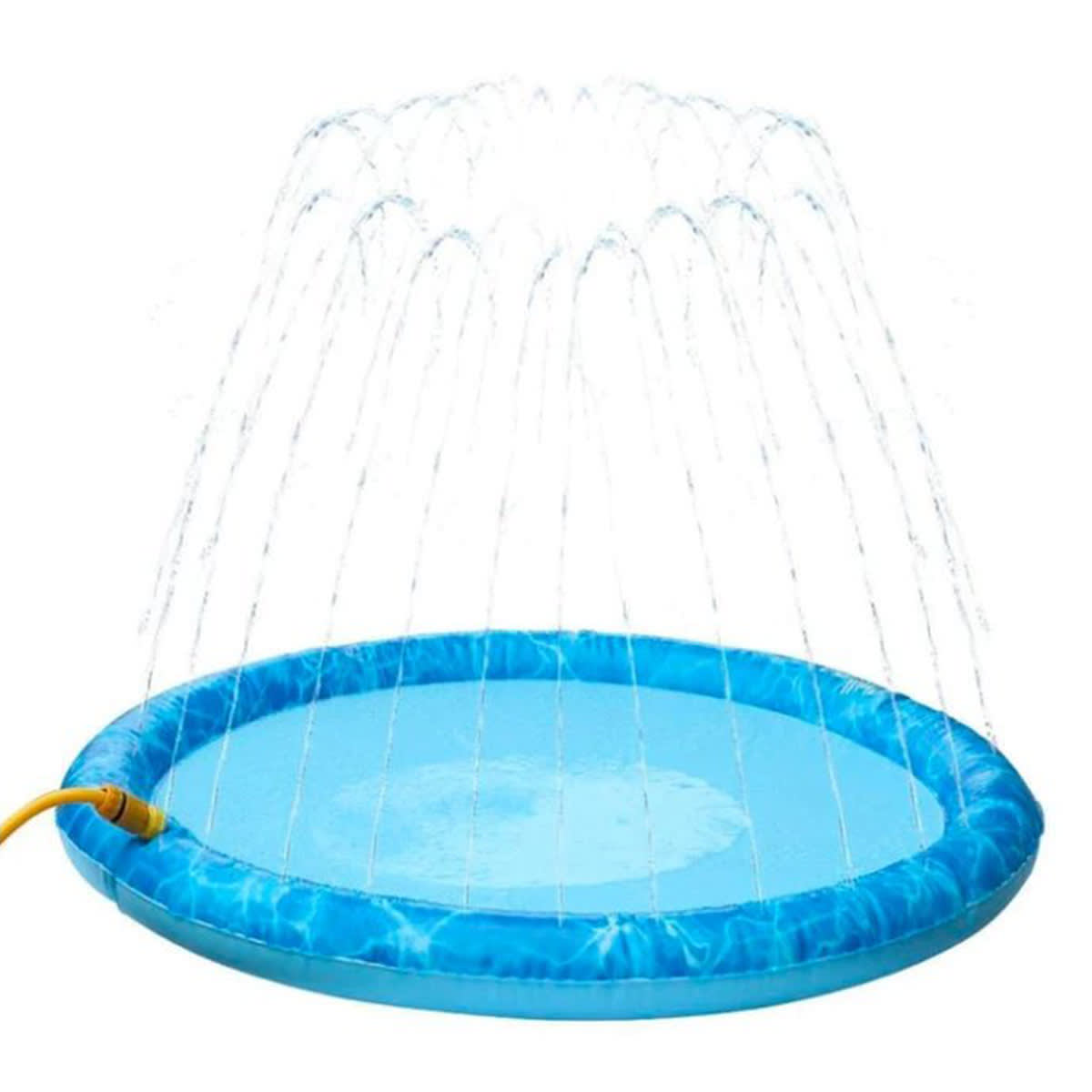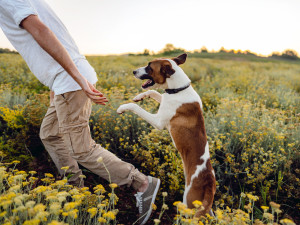How to Keep Your Dog Cool This Summer
Expert advice on preventing heat-stroke and keeping your pup comfortable during warm weather
In this article:
Why dogs struggle in the heat Risk factors Signs of heat-related illness How to keep your dog cool How to cool your dog after exercise What to do in an emergency Dog cooling products
As temperatures climb across the UK, veterinary experts and animal welfare organisations are emphasising the critical importance of heat safety for our four-legged friends. Research from the British Veterinary Association (BVA) reveals alarming statistics: vets see five times more heat-stroke cases during heatwavesopens in new tab, with one in four affected dogs dying.
With dogs being particularly vulnerable to overheating, understanding the risks and implementing preventive measures isn’t just good pet parenting – it could save your dog’s life.
Why dogs struggle in the heat
Unlike humans, dogs can’t pop to the shops for an ice lolly when they’re feeling overheated. Their cooling system is far less sophisticated than ours, and they can’t sweat through their skin like we do. Instead, they rely on panting and releasing heat through their paw pads and nose, which becomes increasingly ineffective as temperatures rise.
This biological limitation means that what feels like a pleasant warm day to us can quickly become dangerous for our dogs. The Royal Veterinary College’s research reveals that heat-stroke can develop at temperatures as low as 16.9Copens in new tab – a temperature many of us wouldn’t even consider particularly balmy.
Further research by the RVC also shows that nearly 60 percent of annual heat-stroke cases occurred during just 40 daysopens in new tab that comprised the five heatwave periods of 2022, highlighting how concentrated the risk can become during extreme weather.
When the external temperature is too high, panting becomes ineffective and their body temperature can quickly escalate. Recognising the signs and taking proactive measures to cool your dog can prevent severe health issues and even save their life in extreme circumstances.
Which dogs are most at risk?
All dogs can suffer from heat-stroke, but certain factors significantly increase the riskopens in new tab and vulnerability of heat-related illnesses.
High-risk dogs include:
Brachycephalic (flat-faced) breeds such as Pugs, French Bulldogs and Bulldogs.
Senior dogs and puppies under six months.
Overweight or obese dogs.
Dogs with thick, double coats.
Those with underlying health conditions, particularly respiratory or heart problems.
Black or dark-coloured dogs (who absorb more heat).
Research shows that exercise is the triggeropens in new tab in over 51 percent of heat-stroke cases, with a hot environment causing 31 percent of cases. Notably, 68 percent of exercise-related heat-stroke eventsopens in new tab occurred after just walking in the heat – not intensive exercise.
How to recognise the signs of heat-related illness
Early detection is everything when it comes to heat-related illness. Based on clinical records from 856 heat-related illness eventsopens in new tab, the most frequently recorded signs were respiratory changes (68.73 percent) and lethargy (47.79 percent). Keep an eye out for these escalating symptoms:
Early warning signs:
Excessive panting that doesn’t ease with rest.
Drooling more than usual.
Lethargy or reluctance to move.
Seeking out cool surfaces to lie on.
Pale or bright red gums.
Serious symptoms requiring immediate action:
Difficulty breathing or noisy breathing.
Vomiting or diarrhoea.
Unsteadiness or stumbling.
Glazed eyes or confusion.
Collapse or unresponsiveness.
If you spot any serious symptoms, this is a veterinary emergency. Cool your dog immediately while someone calls your vet.
How to keep your dog cool
Plan walks during cooler times of the day
The golden rule for summer dog walking is simple: if you’re planning a morning jog, take your dog. Planning an afternoon stroll? Leave them at home.
Early morning walks (before 8am) and evening outings (after 7pm) are ideal when the sun isn’t at its strongest. Not only are air temperatures cooler, but pavements and surfaces have had time to cool down, too. Remember, when in doubt, don’t go out.
The ‘Pavement Test’
Before heading out, place your hand firmly on the pavement for five seconds. If it’s uncomfortable for you, it’s too hot for your dog’s paws. Hot surfaces can cause painful burns and contribute to overheating as heat travels up through their pads.
Hydration station
Make water irresistible by:
Placing multiple bowls around your home and garden.
Adding ice cubes to their water bowl.
Carrying a collapsible bowl and water bottle on walks.
Offering frozen treats such as ice cubes made from diluted low-sodium chicken broth.
Create cool retreats
Transform your home into a canine cooling centre by:
Setting up fans in your dog’s favourite spots.
Closing curtains or blinds to block direct sunlight.
Providing cooling mats or elevated beds for better air circulation.
Designating bathroom tiles or other cool surfaces as ‘chill zones’.
Exercise modifications
During warm spells, adapt your dog’s exercise routine:
Shorten walk duration, but increase frequency.
Choose shaded routes through parks or woodland.
Swap energetic games for mental stimulation activities in a cool space.
Consider indoor training sessions or puzzle toys (such as a frozen Kong toy or lickimat).
Prepare ahead
Before warm weather hits:
Book a vet check to ensure your dog is at an optimal weight.
Discuss grooming options with your groomer – some dogs benefit from summer trims, others don’t.
Invest in cooling products such as mats, vests or portable fans.
Practice emergency cooling so you’re confident if needed. (You can sign up for ‘Cool Dog Summer’ workshopsopens in new tab run by the RSPCA to learn more about keeping your dog safe during the hot weather.)
Download weather apps that show ’feels like’ temperatures.
How to cool your dog after exercise
Even after a walk or play session, dogs can continue to heat up. Research from the Royal Veterinary College (RVC) showed many dogs will continue to get hotter after the exercise had finishedopens in new tab, highlighting an urgent need for owners to proactively cool their dogs down after exercise, if there is a risk of overheating.
Immediate post-exercise steps:
Move to the shadiest, most ventilated area available.
Wet your dog’s body (avoiding the head) with cool water.
Create air movement with a fan, or even waving a towel or blanket.
Offer small amounts of cool water to drink.
Allow your dog to rest completely before moving them.
If you’re heading to the car after a walk, cool the interior first – run the air conditioning and open windows before your dog gets in.
What to do in an emergency
If your dog shows signs of severe overheating:
Stop everything and move to shade immediately.
Cool rapidly using whatever water you have available – pour it over their body, avoiding the head.
Create airflow with fans, air conditioning or manual fanning.
Contact your vet while continuing cooling measures.
Transport safely in a pre-cooled vehicle with air conditioning running.
Remember: cool first, transport second. Don’t waste precious time driving to the vet without starting cooling measures first.
The car danger zone
It cannot be overstated: never leave your dog in a car during warm weather. Even with windows cracked, car interiors can reach lethal temperatures within minutes. On a 22C day, car interiors can soar to 47C in just one hour.
If you see a dog in distress in a hot car, call 999 immediately. Many forces now have protocols for these emergency situations.
The bottom line: keep your dog cool this summer
Keeping your dog cool isn’t about restricting their summer fun – it’s about ensuring they can enjoy the warmer months safely. With proper preparation, awareness of the risks, and smart adaptations to your routine, both you and your dog can make the most of the sunshine.
Remember: when in doubt about whether it’s too hot for outdoor activities, err on the side of caution. Your dog won’t mind missing one walk, but heat-stroke can have consequences that last far longer than any fleeting heatwave.
The mantra from veterinary professionals is simple but vital: if in doubt, don’t go out. Your dog’s safety is always worth more than any missed adventure.
The best dog cooling products
Investing in the right products can make a significant difference in keeping your dog cool during the summer months. Here are some highly recommended items:
This information is not meant to be a substitute for veterinary care. Always follow the instructions provided by your vet.
References
Beard, Sian, et al. “Epidemiology of Heat‐Related Illness in Dogs under UK Emergency Veterinary Care in 2022.opens in new tab” Veterinary Record, vol. 194, no. 11, Wiley, May 2024.
British Veterinary Association. “Vets See Five Times More Heatstroke Cases during Extremely Hot Weather – Dog Owners Urged to Prepare against Summer Heat Tragedyopens in new tab.” British Veterinary Association, 2024.
Carter, Anne J., et al. “Post-Exercise Management of Exertional Hyperthermia in Dogs Participating in Dog Sport (Canicross) Events in the UK.opens in new tab” Journal of Thermal Biology, Elsevier BV, Mar. 2024, pp. 103827–27.
“Dogs Die on Hot Walks | RSPCA.opens in new tab” rspca.org.uk.
“Flat-Faced Dogs such as Bulldogs, French Bulldogs and Pugs at Increased Risk of Heat Stroke.opens in new tab” rvc.ac.uk, 18 June 2020.
Hall, Emily J., et al. “Risk Factors for Severe and Fatal Heat-Related Illness in UK Dogs—a VetCompass Study.opens in new tab” Veterinary Sciences, vol. 9, no. 5, May 2022, p. 231.
“New Research from the RVC Suggests Human Heat-Health Alerts Could Help Prevent Heatstroke in Dogs.opens in new tab” Rvc.ac.uk, 24 May 2024.



